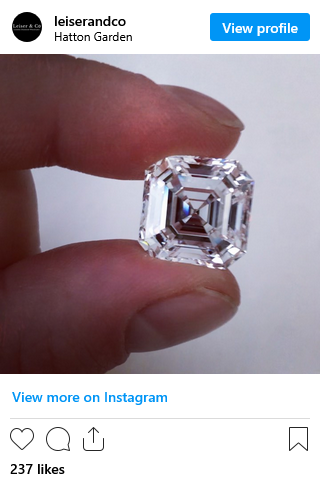Introduction to Conflict-Free Diamonds
The concept of conflict-free diamonds emerged as a global response to the devastating impact of what became known as “blood diamonds.” These are diamonds mined in war zones and sold to finance armed conflict against governments, often leading to extreme violence, human rights abuses, and instability. The term “conflict-free” therefore refers to diamonds that are sourced ethically, without funding violence or being associated with exploitative labor practices. Understanding this distinction is crucial for both consumers and industry players, as it affects not only the ethical image of the jewelry sector but also the broader demand for transparency in global trade. The conflict-free diamond movement has gained momentum in the last few decades, especially as consumers have become more aware of supply chain issues. This awareness has forced mining companies, retailers, and certifying organizations to adopt stricter guidelines to ensure customers can trust the origins of their gemstones.

The Origins of the Blood Diamond Crisis
To fully understand conflict-free diamonds, it is essential to look back at the historical context that gave rise to the demand for regulation. During the 1990s and early 2000s, several African countries such as Sierra Leone, Angola, and the Democratic Republic of Congo saw civil wars fueled by the trade of illicit diamonds. Rebel groups used diamond sales to purchase weapons, perpetuating cycles of violence and terror. Civilians were often forced into mining under brutal conditions, while entire communities were displaced. The international outcry that followed, including media coverage and activism by human rights groups, highlighted the urgent need to sever the link between diamonds and conflict. These revelations shocked consumers worldwide, who began questioning the true cost of their luxury purchases. In turn, governments and industry stakeholders were pressured to take collective action. This ultimately led to the establishment of international frameworks such as the Kimberley Process, which sought to bring accountability and traceability into the diamond trade.
The Kimberley Process Certification Scheme (KPCS)
One of the most significant initiatives to address the blood diamond crisis is the Kimberley Process Certification Scheme, introduced in 2003. This multilateral trade agreement involves governments, the diamond industry, and civil society organizations working together to prevent conflict diamonds from entering the mainstream market. Under this scheme, participating countries are required to certify shipments of rough diamonds as conflict-free, ensuring that only those that meet the standards can be exported and traded internationally. Today, over 80 countries are part of the Kimberley Process, representing the vast majority of the global diamond trade. While the KPCS has been instrumental in reducing the circulation of conflict diamonds, it has also faced criticism. Some argue that its narrow definition of conflict—focusing only on diamonds funding rebel movements against governments—fails to address other abuses such as child labor, unsafe working conditions, or environmental damage. Nonetheless, the Kimberley Process remains a cornerstone of efforts to regulate the diamond trade, offering at least a baseline assurance of ethical sourcing for consumers.
Challenges and Criticisms of the Kimberley Process
Despite its achievements, the Kimberley Process has been scrutinized for its limitations. Critics point out that the framework does not account for situations where governments themselves are implicated in human rights violations within the diamond sector. For example, if a ruling regime controls diamond mines and uses the revenue to oppress populations, the diamonds technically pass as “conflict-free” under KPCS definitions. Furthermore, the scheme has been accused of weak enforcement, as smuggling and fraudulent documentation remain issues in certain regions. Civil society organizations have repeatedly called for stronger monitoring, independent audits, and broader definitions of conflict that incorporate human rights and labor conditions. Another challenge is that consumer expectations have evolved; many buyers no longer feel reassured by basic conflict-free certification alone. Instead, they demand greater transparency, including details about ethical labor practices and environmental stewardship. As a result, many jewelers and diamond companies are looking beyond the Kimberley Process, adopting additional measures and certifications to meet these expectations.
Alternative Certifications and Ethical Standards
In response to the shortcomings of the Kimberley Process, several independent organizations and industry-led initiatives have emerged to provide more comprehensive certification schemes. For example, the Responsible Jewellery Council (RJC) offers a certification program that not only tracks diamond origins but also evaluates companies on human rights, labor practices, environmental impact, and business ethics. Similarly, the World Diamond Council has developed the System of Warranties, which requires companies to include statements on invoices declaring diamonds are sourced responsibly. Some jewelers are also partnering with third-party auditing firms to ensure compliance with ethical standards, while others are embracing blockchain technology to provide full transparency from mine to market. These supplementary certifications are helping to fill gaps left by the Kimberley Process, offering consumers greater confidence in their purchases. As the diamond industry becomes more competitive and consumer trust increasingly hinges on transparency, these alternative standards are becoming valuable tools for companies that wish to differentiate themselves in the marketplace.

Consumer Awareness and Ethical Demand
The rise of consumer awareness has played a pivotal role in shaping the diamond industry’s approach to ethical sourcing. In today’s market, buyers are not only interested in the physical qualities of diamonds, such as cut, clarity, and carat, but also in their origins and the ethical implications of their purchase. Millennials and Gen Z, in particular, have demonstrated a strong preference for brands that prioritize sustainability and transparency. Social media campaigns and documentaries have amplified the conversation around blood diamonds, making it difficult for companies to ignore these concerns. As a result, many jewelry retailers now highlight conflict-free certifications as part of their marketing strategies, appealing to customers who want to align their purchases with their values. This shift underscores the growing recognition that a diamond’s story is as important as its sparkle, and that consumer trust must be earned through verifiable commitments to ethical practices.
Lab-Grown Diamonds as an Ethical Alternative
An important development in the conversation about conflict-free diamonds is the rise of lab-grown diamonds. Unlike mined diamonds, which are extracted from the earth and subject to complex supply chain challenges, lab-grown diamonds are created in controlled laboratory environments using advanced technology. Because their origins can be fully traced, they are often marketed as a completely ethical and conflict-free option. Lab-grown diamonds also have a reduced environmental footprint compared to large-scale mining operations, which can involve land disruption, water pollution, and ecosystem damage. Although some industry purists argue that lab-grown diamonds lack the historical and geological significance of natural stones, they have gained wide acceptance among environmentally conscious and ethically minded consumers. In addition, they are physically and chemically identical to natural diamonds, offering buyers the same brilliance without the ethical uncertainty. This alternative is reshaping the jewelry market, forcing traditional diamond companies to acknowledge the demand for greater transparency and sustainable choices.
Technological Innovations in Traceability
Beyond certification schemes, technology is playing an increasingly critical role in ensuring the authenticity and ethical origins of diamonds. Blockchain technology, for instance, is being used by several diamond companies to create immutable records of each stone’s journey from mine to market. This digital ledger provides buyers with a clear history of ownership, reducing the risk of fraud and reinforcing consumer confidence. Other innovations include laser inscription techniques, which allow diamonds to be marked with microscopic codes that correspond to certification records. These advancements are making it harder for conflict diamonds to slip into legitimate markets, while also empowering consumers to verify the claims made by retailers. As these technologies become more widespread, the diamond industry is moving toward a future where complete transparency and accountability are not just marketing promises but practical realities. This shift could also inspire similar developments in other luxury sectors that grapple with sourcing concerns, such as gold, gemstones, and fashion.
The Future of Conflict-Free Diamond Certification
Looking ahead, the future of conflict-free diamond certification is likely to involve a combination of stricter international regulations, more comprehensive certification programs, and the integration of advanced technologies. Governments and industry leaders may continue to refine the definition of “conflict” to include broader ethical concerns, such as labor rights, environmental sustainability, and community development. At the same time, consumer demand for transparency is unlikely to diminish, ensuring that ethical sourcing remains a central focus of the diamond trade. Companies that fail to adapt risk losing market share to competitors that can demonstrate genuine commitment to responsible practices. The role of independent organizations, third-party auditors, and technological innovations will likely expand, offering consumers multiple layers of assurance. Ultimately, the success of conflict-free certification depends on the collaboration of governments, corporations, and consumers alike. As long as awareness continues to grow, the industry may see an era where every diamond purchase supports positive development rather than exploitation and harm.
Conclusion
Understanding conflict-free diamonds and their certification requires looking at both history and present-day developments. The blood diamond crises of the past exposed the darker side of the jewelry industry, prompting global initiatives like the Kimberley Process to bring accountability to diamond trading. While such frameworks laid important groundwork, evolving consumer expectations and the rise of ethical alternatives have shown that more comprehensive solutions are necessary. Innovations in blockchain traceability, expanded certifications, and the popularity of lab-grown diamonds are shaping a more transparent and sustainable future for the industry. By staying informed, consumers can make purchasing decisions that not only celebrate beauty but also uphold ethical responsibility. The journey toward fully conflict-free diamonds is ongoing, but it reflects a broader trend toward conscious consumption and global accountability.




